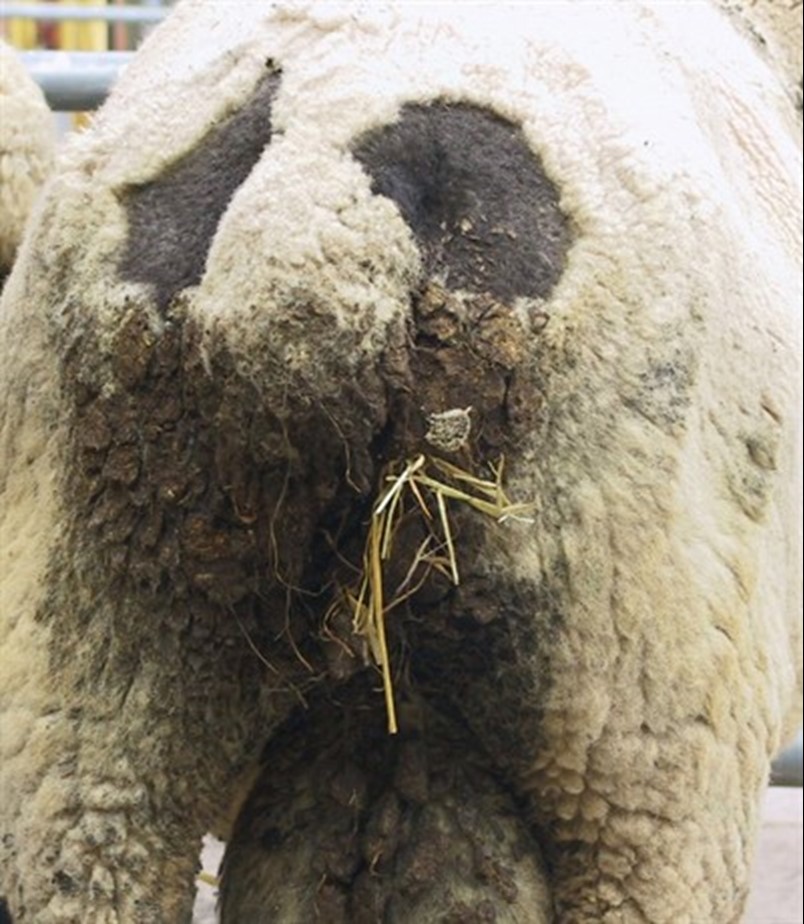Up to 60% off
Up to 60% off


(image source:www.nadis.org.uk)
Through the warmer months, blowfly strike poses a real threat to flocks across the UK. Anybody with sheep or had experience with sheep has undoubtedly experienced the issue and can appreciate just how important it is to avoid a case.
Flies love to lay their eggs on a sheep’s fleece as they are often warm and damp with plenty of organic material to feed the larvae once they hatch. The sheep's back legs and hind quarters are the most common points for strike to occur, but cases can be found almost anywhere on the sheep, including in the feet.

(image source:www.nadis.org.uk)
This understandably causes a great deal of pain for the affected animal and causes loss of appetite and eventually death if left untreated. Aside form the obvious welfare issue that fly strike raises, there is also the negative economic impact on your seasons crop of lambs to take into consideration when formulating your fly control plan for the summer months.
Diagnosing strike takes little more than watching your flock for the early signs. Dark, damp patches of wool are a tell-tale sign along with sheep trying to chew affected areas or twitching of the skin.
If you inspect the fleece on your sheep, you will be able to see small yellow eggs attached to the fleece before they hatch.
Catching strike early means a full recovery can often be made and can limit the financial damage it can cause.
There are two main methods of protection and treatment for your flock available as POM-VPS products in store. These are split into Insect Growth Regulators (IGR’s) and Synthetic Pyrethroids (SP).
IGR’s work by mimicking the growth regulatory hormones in insects that cause moulting to take place. This means that they cannot progress further than the nymph stage and do not moult into the larvae that are responsible for fly strike.
SP products work by disrupting the insect’s nervous system, causing a weakened state and eventually death. IGR’s are fleece binding. This means that once applied, they bind to the lanolin in the fleece and protect the entire sheep from fly strike for the period intended. We offer three IGR products instore that offer protection from 8 weeks all the way up to 19 weeks.
It is important to consider the withdrawal period for these products. CikExtra offers 19 weeks protection but there is a 40-day meat withdrawal period making it a good choice for your breeding ewes, tups and any replacements. ClikZin offers 8 weeks protection but only has a 7-day withdrawal period making it a popular choice for meat lambs. The Clik range is a great choice if you want peace of mind that your flock is protected throughout the season and can be applied to any length of fleece including off-shears. As they are fleece binding products, once the fleece has been removed, the product will need reapplying.
SI products are also a useful tool throughout the fly season if used and understood correctly. SI products will not only offer protection from fly strike but can also be used to treat established strike. Typically, they offer 6-8 weeks protection, however they only protect where they have been applied. This means that the should the animal contract maggots in their feet and then lay on them, their chest will not be protected as it would be with an IGR.
SI’s are a great choice if you are regularly inspecting your flock at close range and can catch and treat any cases that may occur as soon as possible. We have many SI products available in store.
Crovect holds a 7-day withdrawal period and offers up to 10 weeks protection from fly strike on applied areas, treats for lice and offers 10 week protection from ticks. It also can be used to treat existing strike.
Fly Off has an 8-day withdrawal period and offers the same 10 week protection. We also stock Fly & Lice Spot On that is suitable for both sheep and cattle. Fly & Lice Spot on offers protection from nuisance and biting flies in cattle for up to 8 weeks and holds a 17-day withdrawal period.
It will also treat establish strike and lice in sheep but does not offer the same protection against flies as Crovect or Fly off.
To keep up to date with the parasite forecast in your area, we highly recommend using the NADIS website. There is a super helpful parasite forecast map which can be viewed by clicking the image below. Remember that prevention is better than cure, and using this tool can be invaluable in aid to keep your flock healthy.
If you are unsure about what the most appropriate protection is going to be for your flock, then come into the store and talk to one of our registered animals medicines advisors.